The Daytime Foraging Behavior and Dispersal of Winter Roosting Crows
by Craig Gibson, Jan. 2025
During the winter months, American Crows (Corvus brachyrhynchos) and Fish Crows (Corvus ossifragus) disperse from their massive overnight roosts at dawn, spreading across the landscape to forage. This daily dispersal, spanning urban, suburban, agricultural, and natural areas, is a marvel of ecological adaptation and intelligence. Understanding their foraging behavior sheds light on the factors that sustain these birds through harsh winters and their remarkable success in human-dominated environments (Marzluff & Angell, 2005).
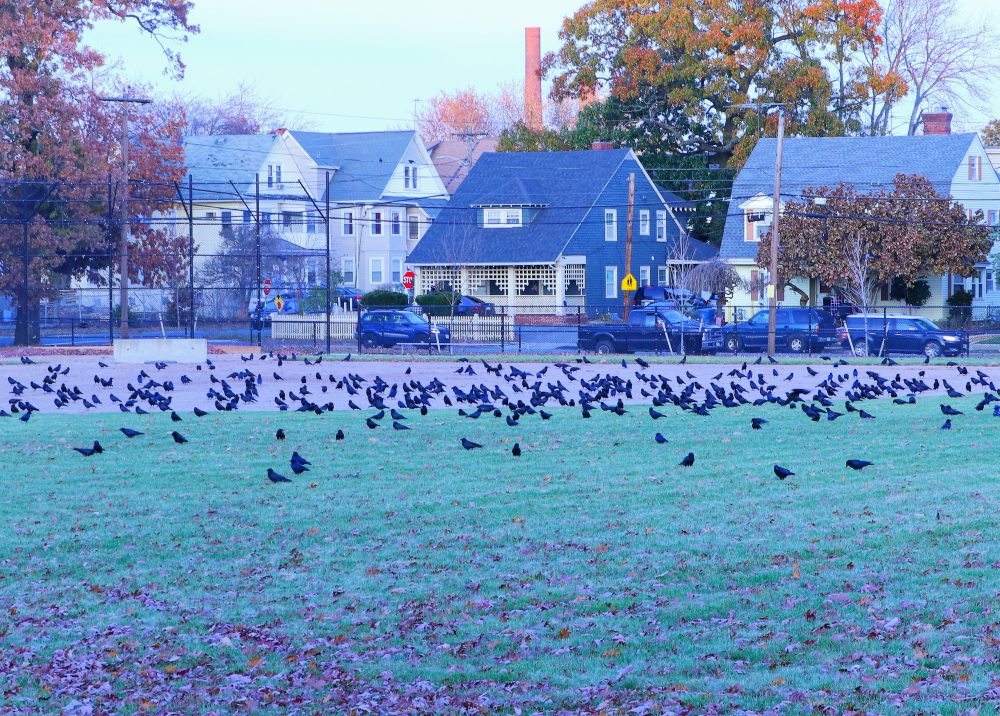
Crows are highly opportunistic foragers, adept at exploiting a variety of food sources. In rural areas, they glean fields for leftover crops like corn, soybeans, or other grains, often following machinery during harvest seasons. In suburban and urban settings, they scavenge dumpsters, parks, and roadsides, capitalizing on human waste (Cornell Lab of Ornithology). Their ability to crack nuts, extract insects from leaf litter, and even cache food for later use highlights their ingenuity. In natural settings, crows feed on berries, seeds, invertebrates, and the occasional small mammal, showcasing their versatility in food preferences (Verbeek & Caffrey, 2002).
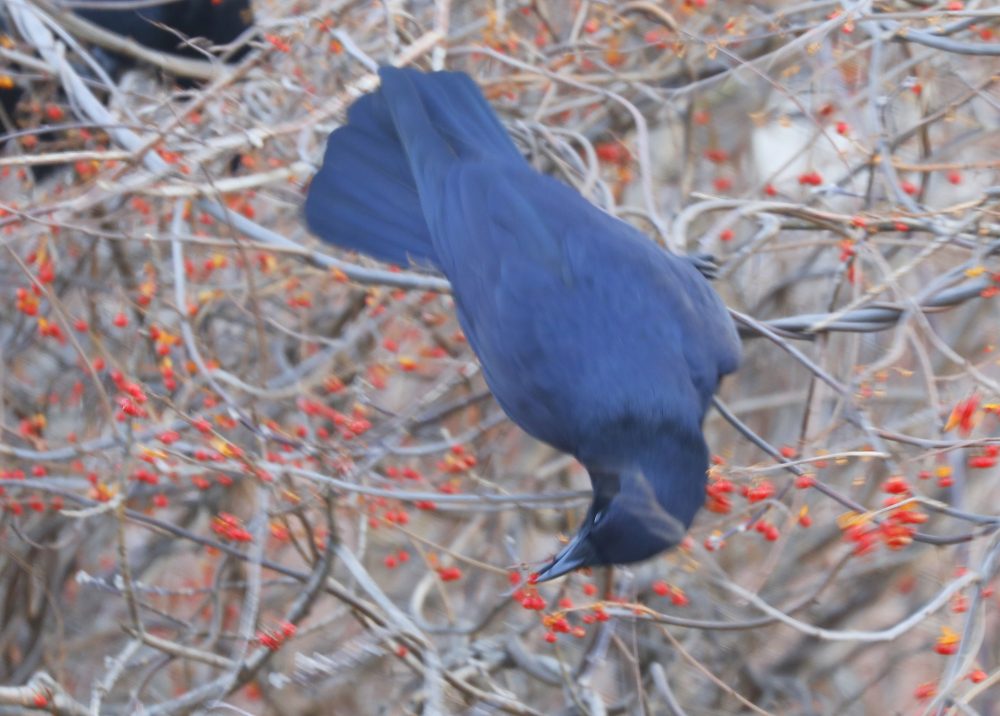
This foraging behavior is driven by a complex social structure that promotes learning and cooperation. Juvenile crows often follow adults, observing their methods of accessing food. Instances of tool use, such as dropping nuts on hard surfaces to crack them, have been well-documented, underscoring their problem-solving skills (Heinrich, 1999). Foraging in groups provides additional safety, as multiple eyes are better at detecting predators like hawks or owls.
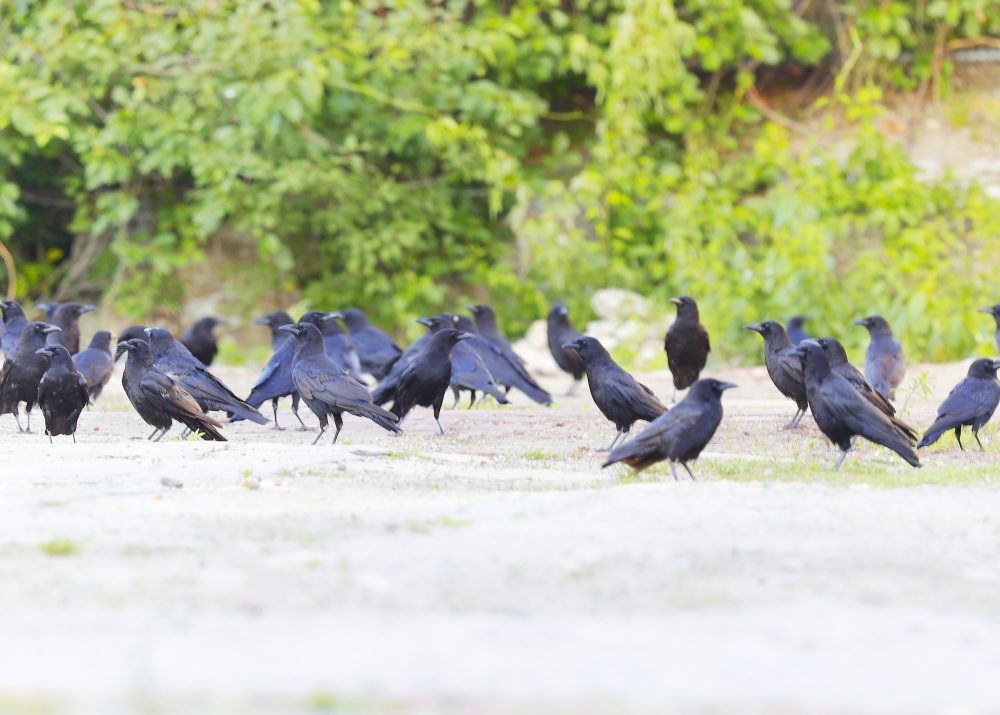
Crows are also known for their “information centers,” a fascinating aspect of their social behavior. Staging areas, where smaller groups of crows gather before heading to their final overnight roost, often serve as hubs of information exchange. Birds returning from successful foraging expeditions may influence where others forage the next day. This sharing of knowledge enhances their collective ability to locate and exploit food resources (Marzluff & Angell, 2005).
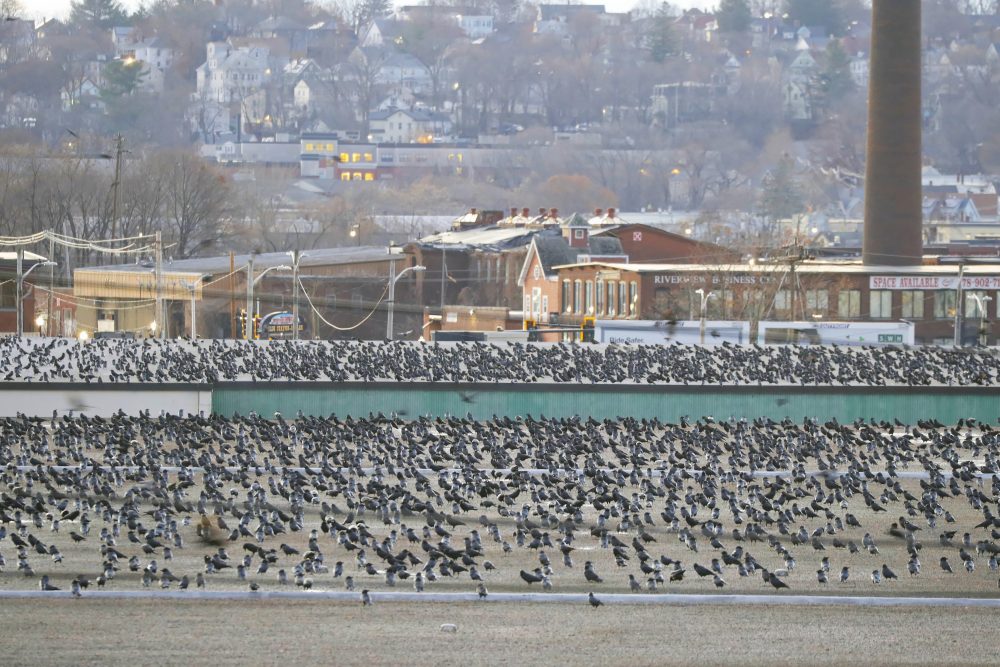
The dispersal distance from a roost can range from a few miles to over 30 miles, depending on the availability of food and the size of the roosting population. A winter roost hosting tens of thousands of crows requires an extensive network of foraging grounds to sustain it (Haikonen & Jokimäki, 2013). This demand often brings crows into contact with humans, where their presence can elicit mixed reactions. While some people enjoy their intelligence and adaptability, others may find their scavenging habits troublesome.
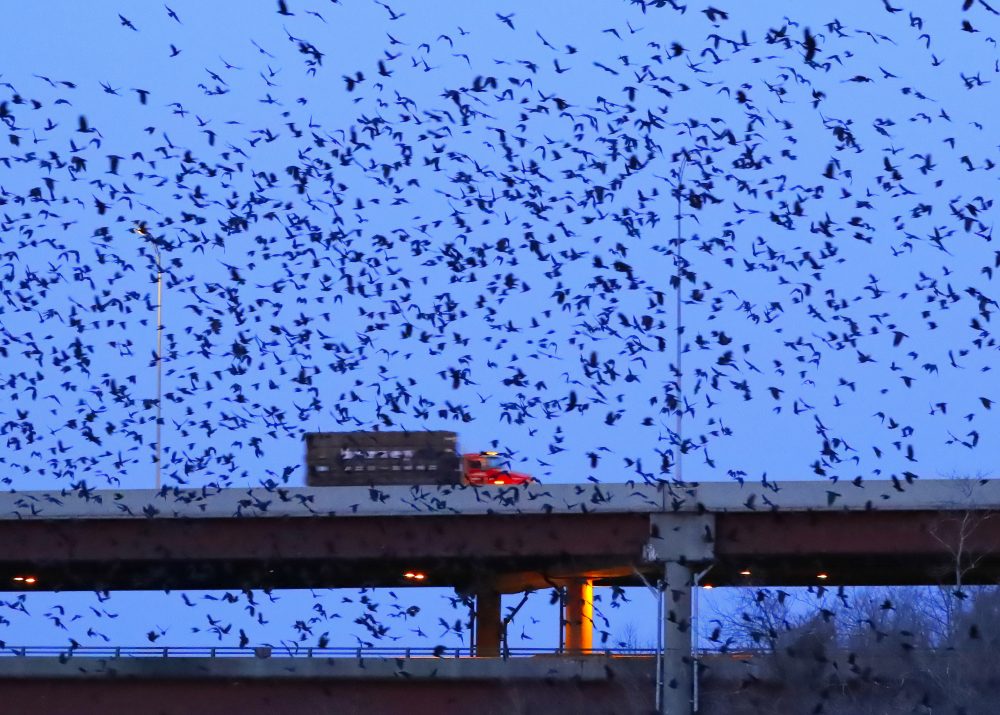
Despite these challenges, crows play a vital ecological role as scavengers and seed dispersers. Their foraging activities help clean up carrion and waste, while their consumption and redistribution of seeds contribute to plant regeneration (Verbeek & Caffrey, 2002). By adapting to both natural and human-altered environments, crows have become one of the most resilient bird species in North America.
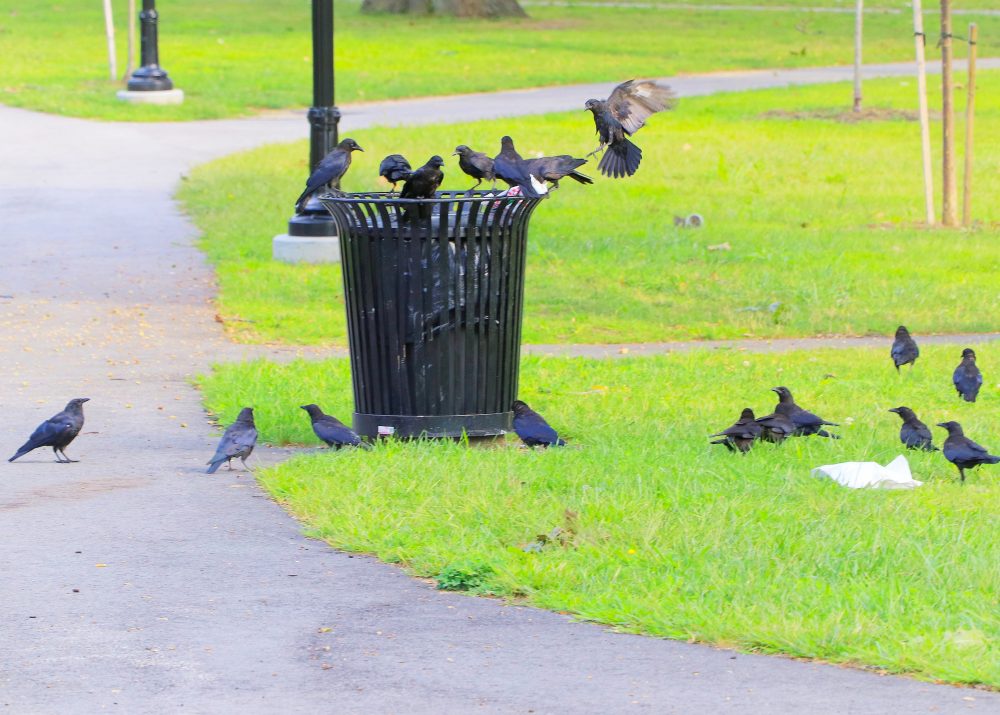
In summary, the daytime foraging behavior and dispersal of crows reflect their extraordinary intelligence, adaptability, and social cohesion. These behaviors not only sustain their large winter roosts but also highlight the intricate ways in which wildlife interacts with and adapts to the human landscape. For bird enthusiasts and ecologists alike, observing the daily movements of these remarkable birds provides valuable insights into their role in the ecosystem and their strategies for survival.
References:
1. Marzluff, J. M., & Angell, T. (2005). In the Company of Crows and Ravens. Yale University Press.
2. Cornell Lab of Ornithology – All About Birds: American Crow. [https://www.allaboutbirds.org/guide/American_Crow/overview](https://www.allaboutbirds.org/guide/American_Crow/overview)
3. Heinrich, B. (1999). Mind of the Raven: Investigations and Adventures with Wolf-Birds. HarperCollins.
4. Verbeek, N. A. M., & Caffrey, C. (2002). American Crow (Corvus brachyrhynchos), version 2.0. In The Birds of North America – (A. F. Poole and F. B. Gill, Editors). Cornell Lab of Ornithology.
5. Haikonen, T., & Jokimäki, J. (2013). Winter roosts and foraging behavior of urban crows (Corvus corone* and Corvus cornix). Urban Ecosystems, 16(2), 239-247.


Leave A Comment